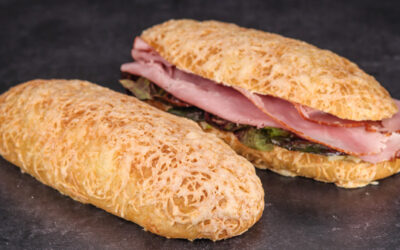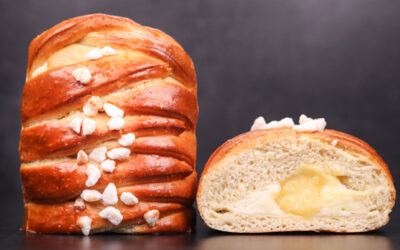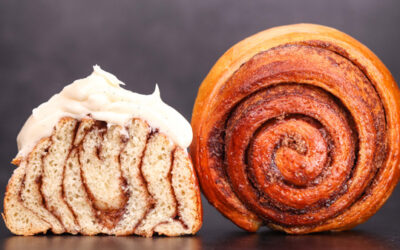How to Make Kaiser Rolls | Is This the Perfect Sandwich Roll?
Kaiser rolls have been around for a couple hundred years. Originating in Austria they are thought to have been named after Kaiser Franz Joseph who was the emperor back in the day.
Kaiser rolls can be small or large. They can be used as soup rolls, dinner rolls, or sandwich rolls depending on their size. Smaller ones will be crustier and larger ones will be puffier and lighter. What makes them unique is their shape. That star or flower pattern can be achieved in multiple ways.
There are even special stamps used to create that design. I will show you a way that does not require any additional equipment.
This recipe makes 4 large rolls. To make more simply multiply the ingredients. Or to make them smaller just divide the dough into more pieces.
Watch the video down below for detailed instructions.
Ingredients
For the dough –
250g (8.8oz) white bread flour
3g (0.1oz) instant dry yeast or 3.6g (0.12oz) active dry yeast or 9g (0.31oz) fresh yeast
5g (0.17oz) salt
1 egg, around 50g (1.75oz)
20g (0.7oz) softened butter
10g (0.35oz) sugar
110g (3.9oz) cold milk*
*To learn more about dough temperature control click here.
Topping –
Milk for brushing
Poppy seeds
Sesame seeds
The flour I use has a protein content of 13%. If your flour is weaker, then you may need to lower the hydration.
If you are using active dry yeast, then you may need to let it sit in the water for 10 minutes before adding the other ingredients or else it could take a lot longer to raise the dough.
If you are curious about why the dough contains butter, egg, and sugar, click the links to learn more about the effects those ingredients have on bread dough.
Method
- In a large bowl combine the milk, egg, yeast, salt, sugar, and butter. Mix well to dissolve the salt and sugar, and to hydrate the yeast. Add the flour and mix to a dough.
- Tip the dough out on the table and knead for 5 minutes. *Desired dough temperature 26C (79F). If your dough is warmer, then it will ferment more rapidly. If it is cooler, then it will take longer. Adjust proofing time accordingly.
- Cover and ferment for 45 – 60 minutes.
- Fold.
- Ferment for another 45 – 60 minutes.
- Divide in 4 equal pieces and shape into cylinders. Leave to rest for 20 minutes.
- Shape the Kaiser rolls. *See video.
- Place on a non-stick paper lined tray with plenty of space between them.
- Cover and final proof for 1 hour. *During this time preheat your oven to 160C (320F) fan on.
- Brush with milk, sprinkle with seeds, and bake for 20 minutes.
Leave to cool down and enjoy!
Keep in mind that the conditions in each kitchen are different, so fermentation times may vary for you. It is up to the baker to control the bread and react accordingly.
Your oven may be different too, so your baking time may vary.
Watch the video here



